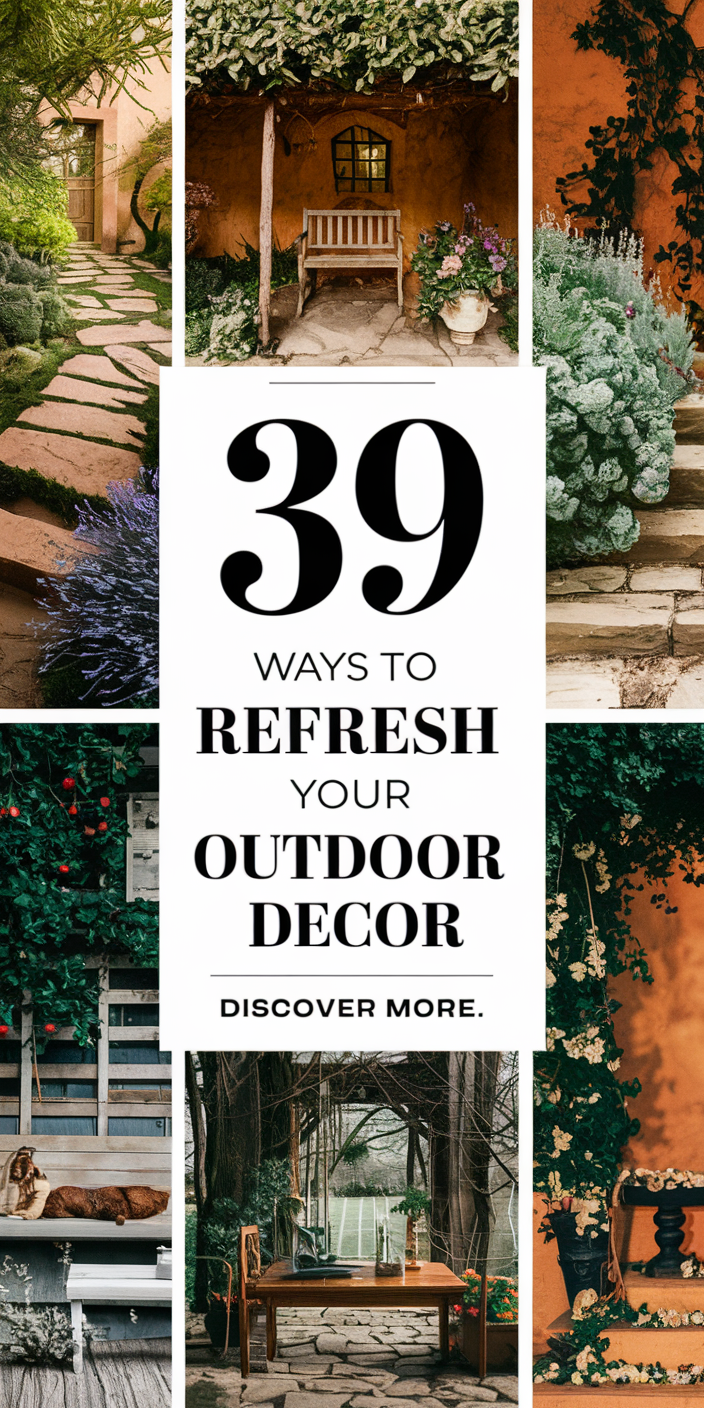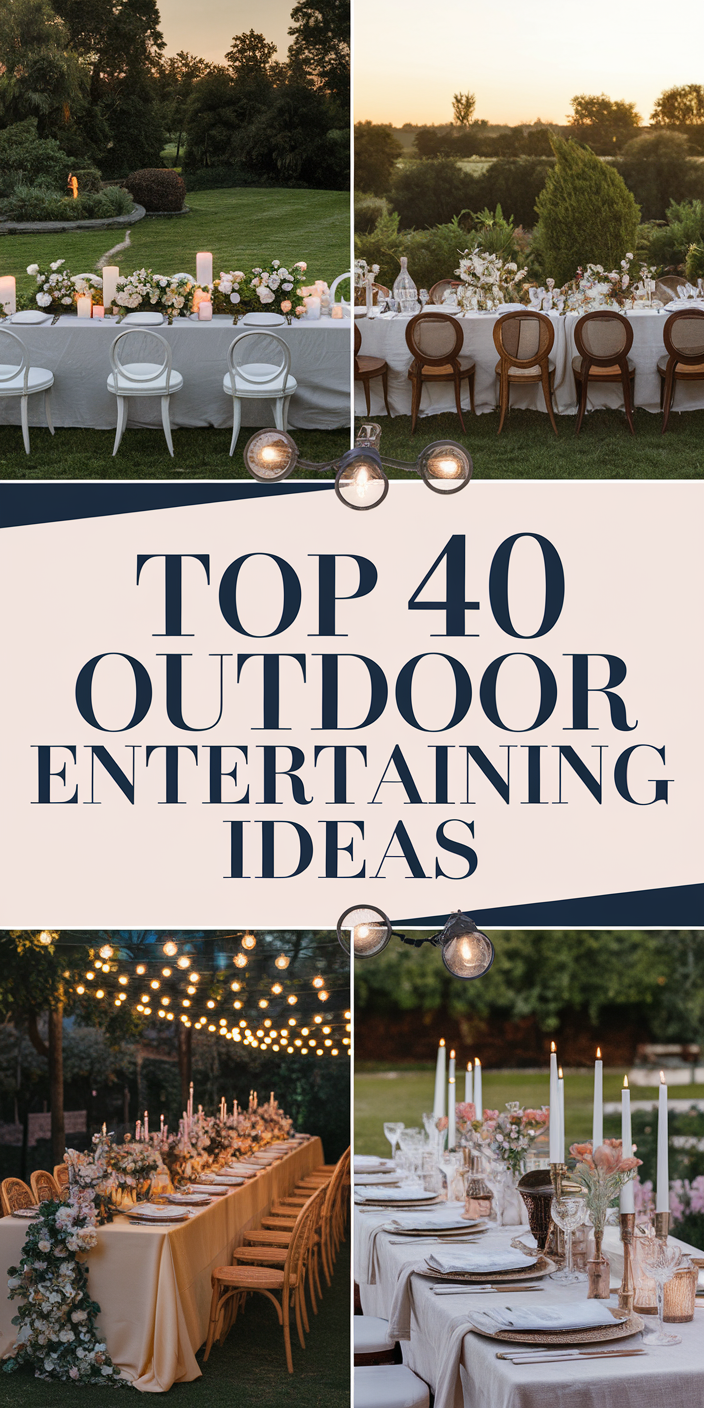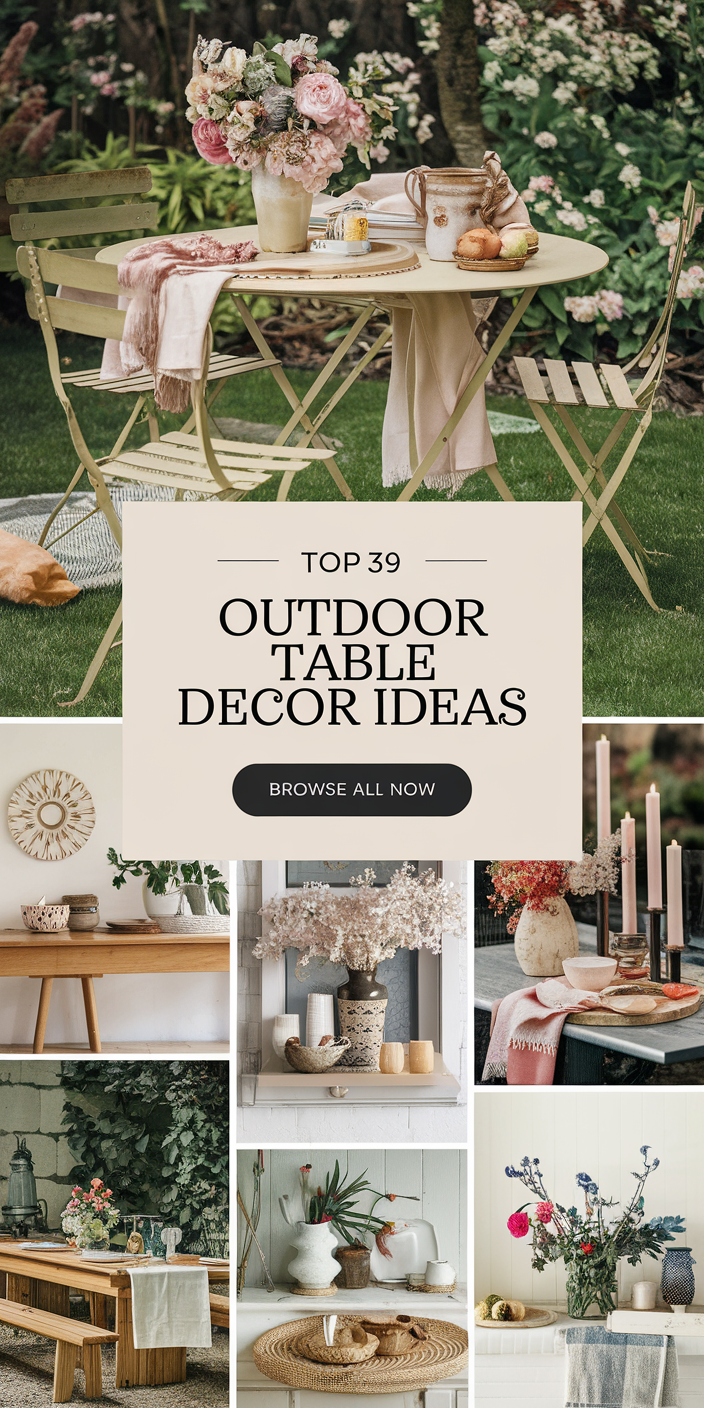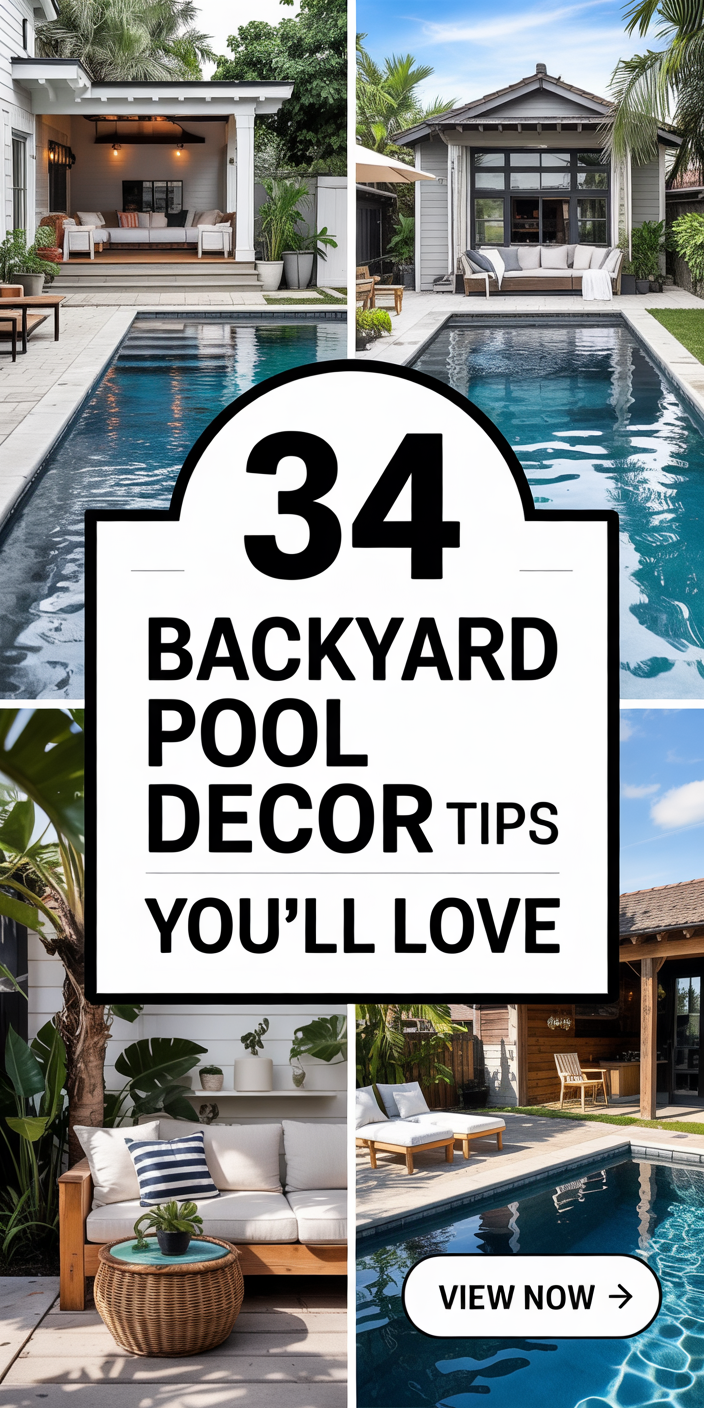Front Door Color 2026 trends with 38 stylish ideas for brick, white, and farmhouse homes
Home exterior styling trends for 2026 see front door colors becoming a yardstick for measuring creativity and personality, no longer merely a component of value estimating for resale. From a red brick home with gray siding to a modern bridge home, exterior design is here to stay. Welcome moments are here to stay, too. Fun, bold, and expressive are how door colors should feel, and color forecasters and decorators are taking note. Below are ten fresh ideas for a white house, tan house, farmhouse, modern build, or anything in between.
1. Midnight Blue Confidence
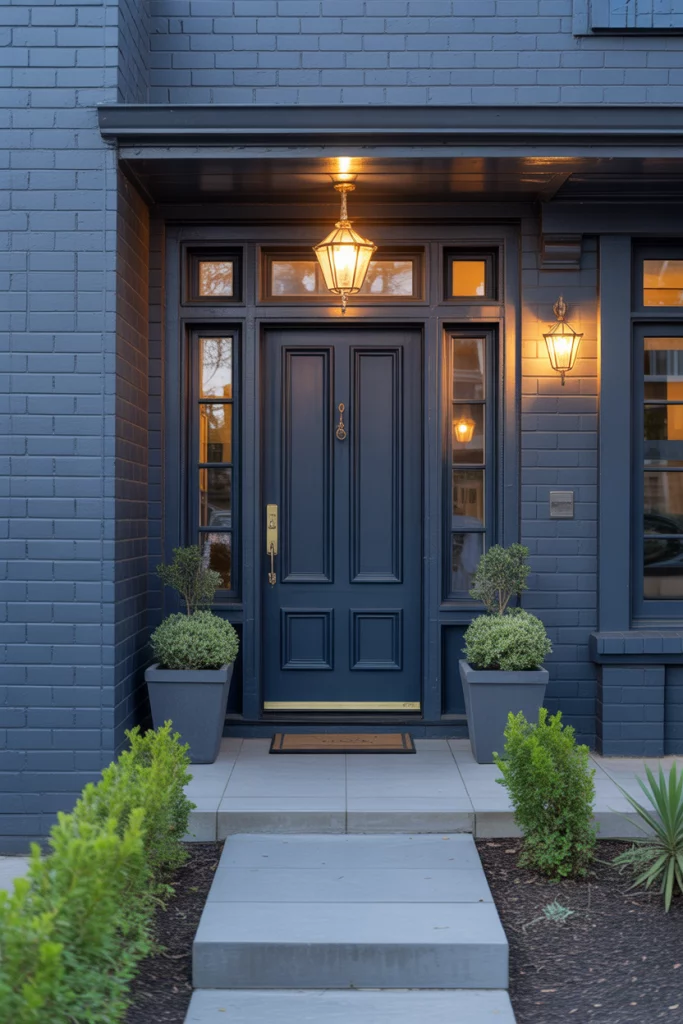
Enjoy how a deep blue door elevates a gray or tan house. It’s chic and dramatic without being overpowering. Designers love the confidence this color gives paired with brass accents and clean lines. The even smaller porches feel intentional with this color, especially blue vertical elements illuminated at twilight. The cinematic glow of dusk blue is warm and inviting; even the most selective of neighbors notice the confidence.
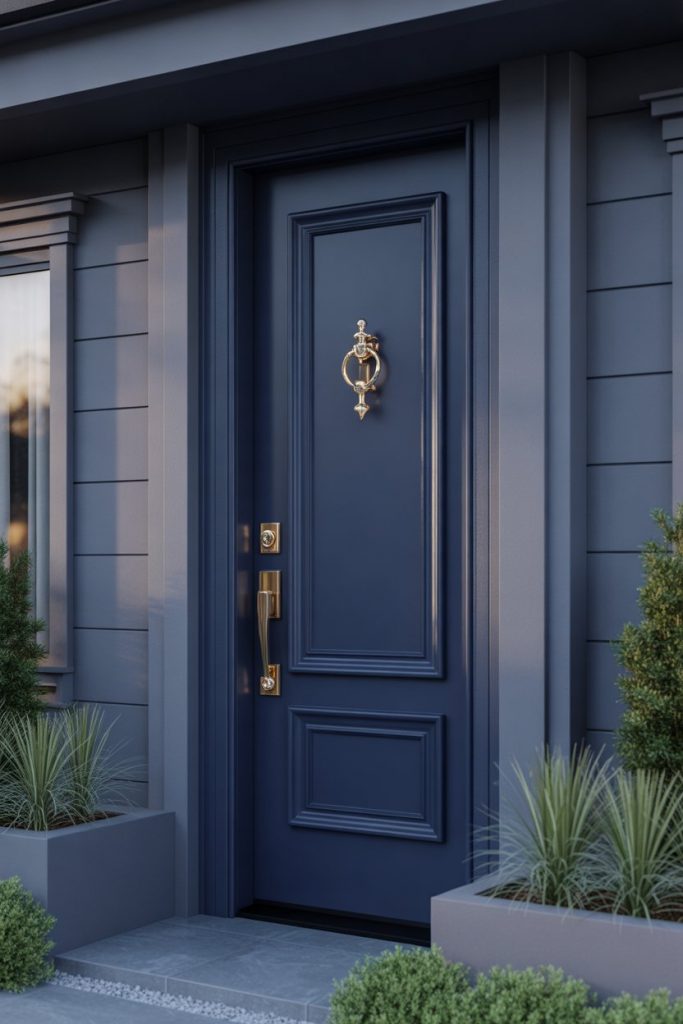
2. Sage Green Calm

The soft sage green is perfect for the exterior of a white, beige, or relaxed farmhouse. The tone is soft and calming and almost feels like sunlight is filtering through the leaves and is very pleasing to the eyes. It blends beautifully with stone paths, wooden beams, and matte black fittings. Green is the most calming color, and for most color therapists, the green sage lowers the stress levels and is perfect for relatives or guests even before they knock on the door. This is the perfect subtle psychological trick for hospitality. Many homeowners love this soft sage and green color to balance their home without attracting too much attention. This color has a never-ending appeal and does not go out of style.
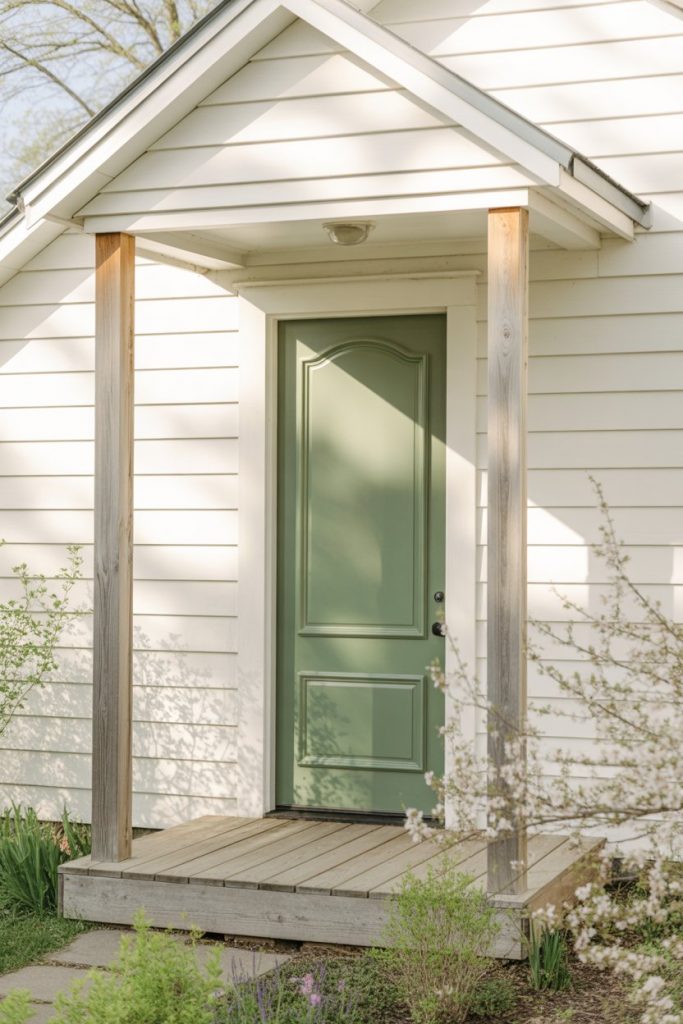
3. Cherry Red Charm
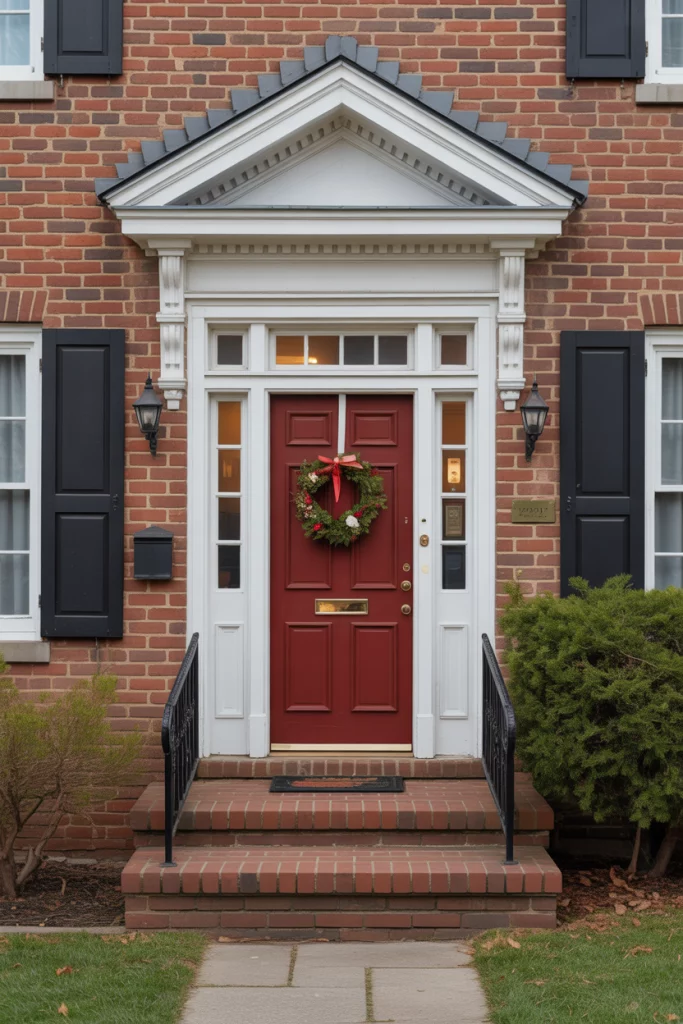
Painting a door bright red on a red brick house creates that classic Americana curb appeal and adds a cheerful, nostalgic, and even magical vibe. A red front door adds character to an otherwise dull gray-sided home and adds warmth to a blue house. The color is lively but not childish; it gives the impression of a vintage sports car. One homeowner has a red door, and almost every trick-or-treater for miles comes to her house, which is the sweetest five-star review a paint shade could earn.
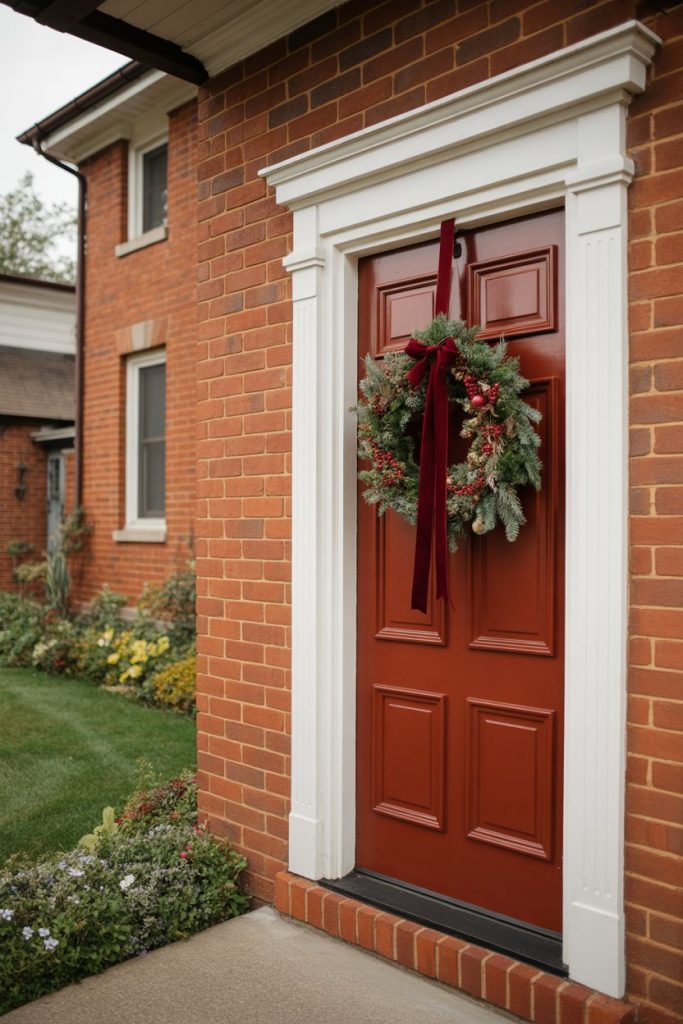
4. Modern Gray on Gray
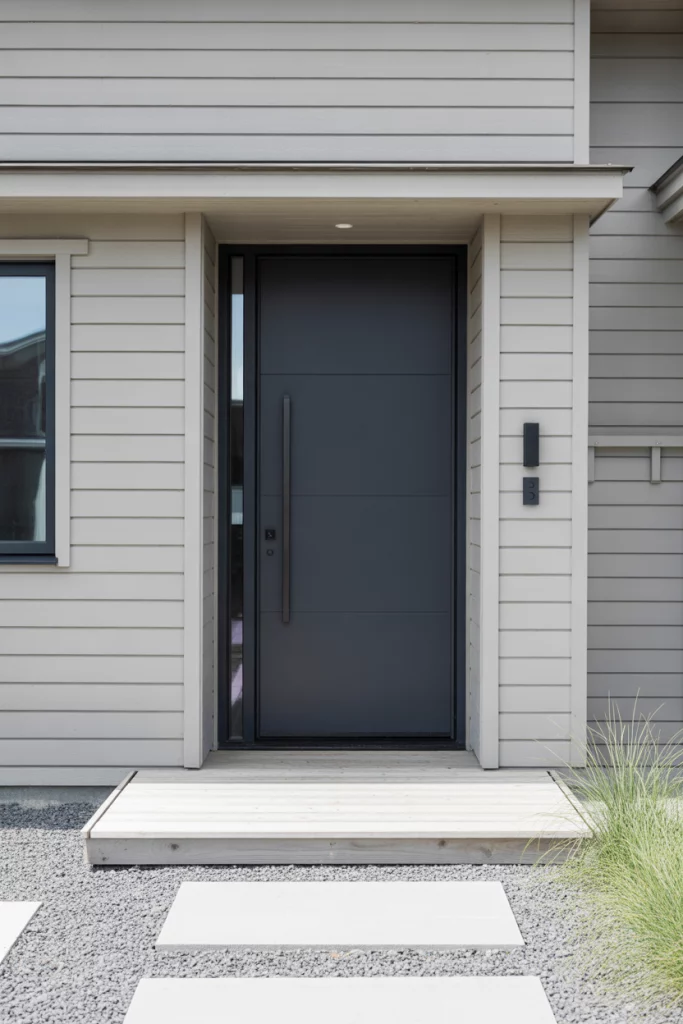
The combination of a darker gray door against lighter gray siding has captured a minimalist target for 2026. The appearance is clean, architectural, and without unnecessary elements—ideal for Scandinavian-style ranches or urban constructions. The secret is to select a mild contrast so that the door is readable but not offensive. Graphite or brushed steel hardware balances the ensemble’s quiet, contemporary feel. This is for those who appreciate “design fluency” without a riot of color.
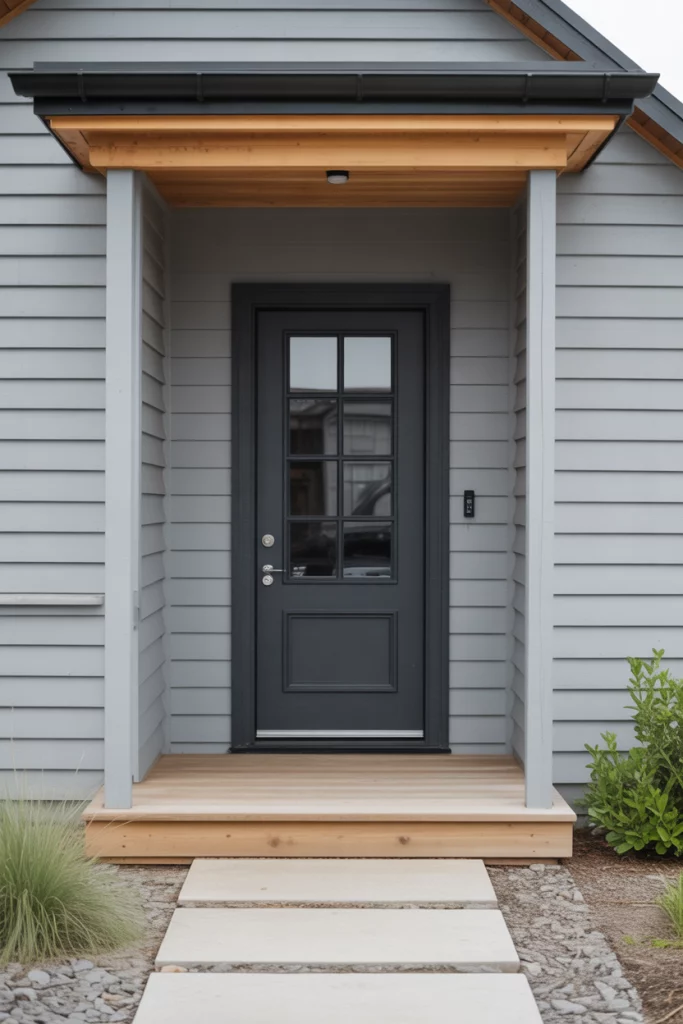
5. Sunlit Yellow Optimism
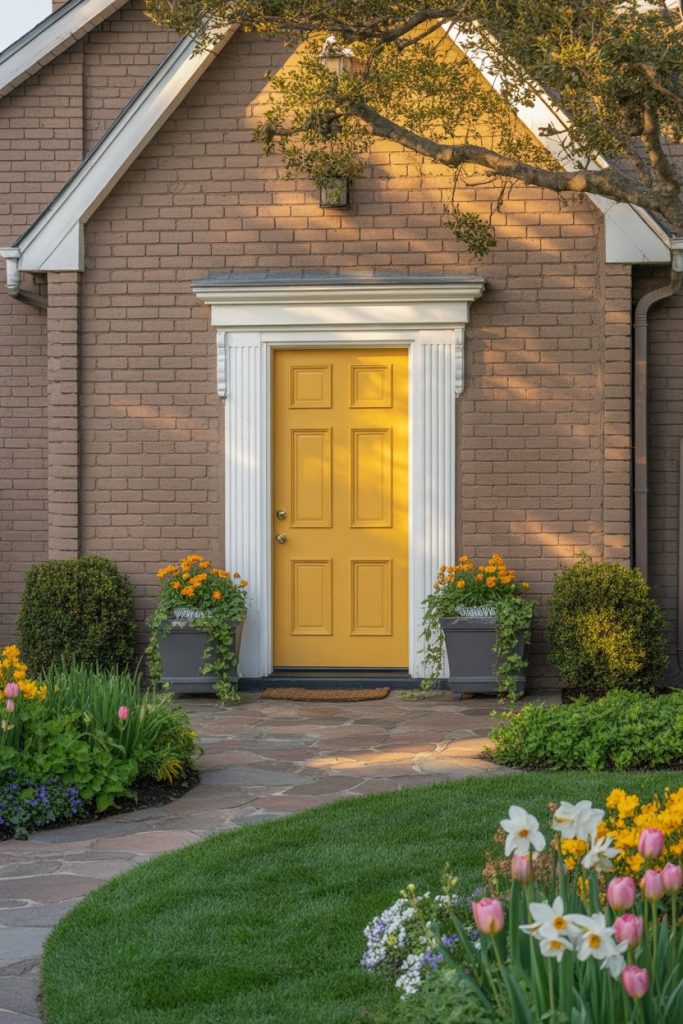
A soft yellow door can turn even a brown brick or brown house into the happiest entry on the block. Real estate stagers love it because buyers subconsciously associate yellow with good energy and warmth. The shade works especially well in regions with long winters, where homes need extra brightness. Pair it with crisp white trim or muted stone, and you get a friendly pop that still ages gracefully instead of looking cartoonish.
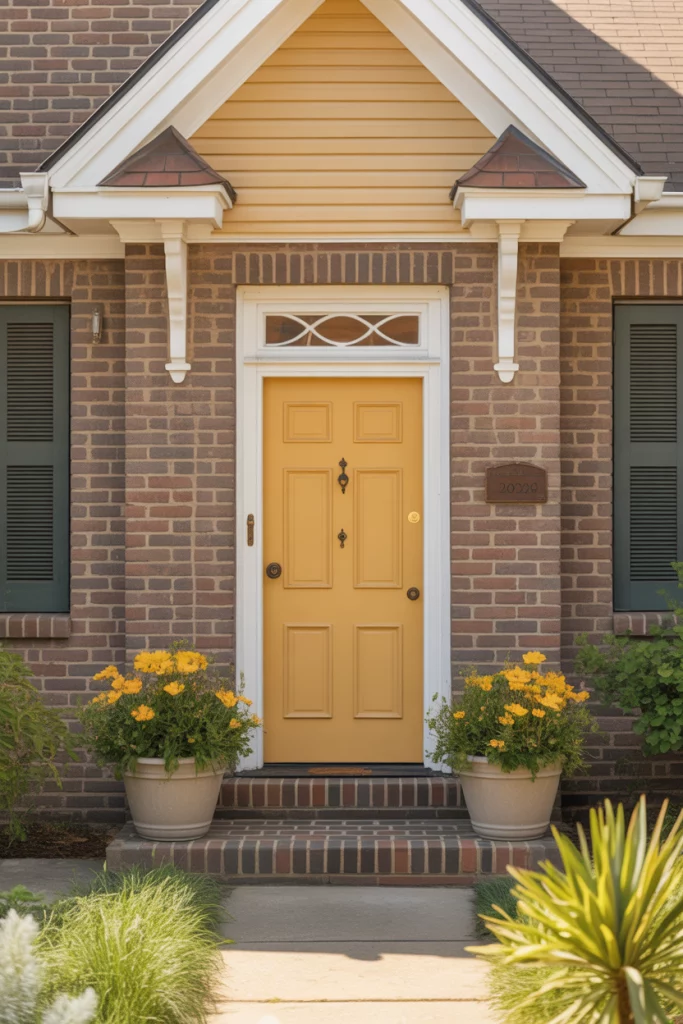
6. Black for Bold Simplicity
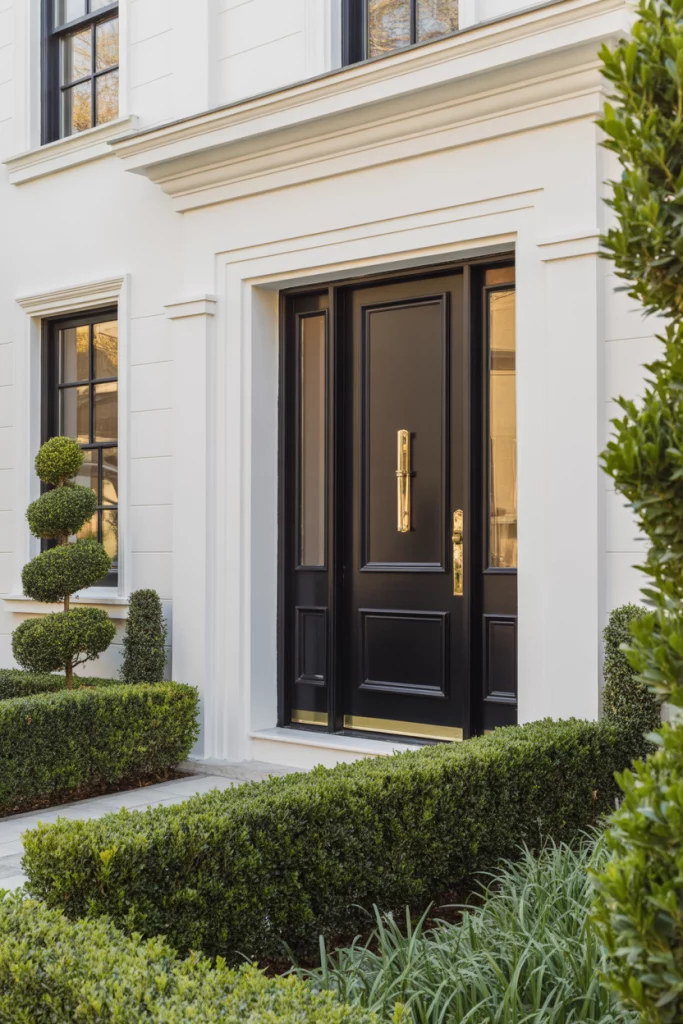
A black front door is the definition of bold without being loud. It gives a white house instant contrast and makes a beige house look intentionally styled. Realtors often recommend black because it signals timeless elegance; it works for colonial homes, loft-style entries, and modern cubes alike. Add gold or chrome hardware, and the whole scene reads “quiet luxury.” No surprise, black shows up in almost every high-end listing photo.

7. Coastal Blue Siding Harmony
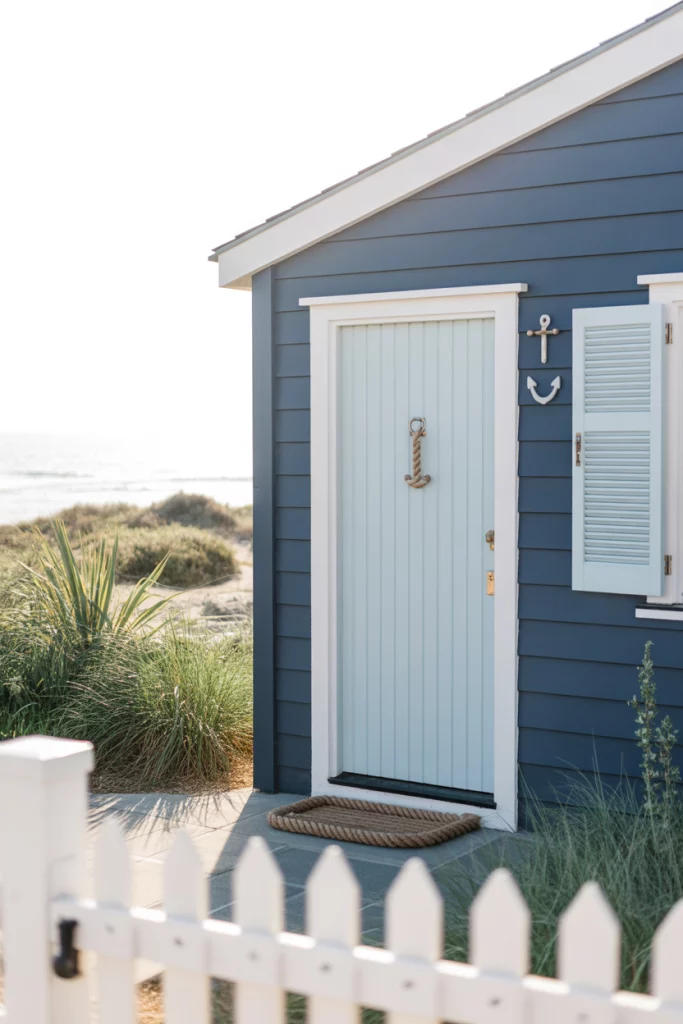
If you already have blue siding, try a tone-on-tone door just a shade lighter or darker. The effect is soft and coastal, like the overlapping colors of sea and sky. Designers in New England swear by this approach for cottages, lake houses, and breezy porches with rope accents or driftwood details. It’s an easy way to stay colorful without clashing, especially if your home is already near water or styled like it is.
8. Earthy Brown Brick Blend
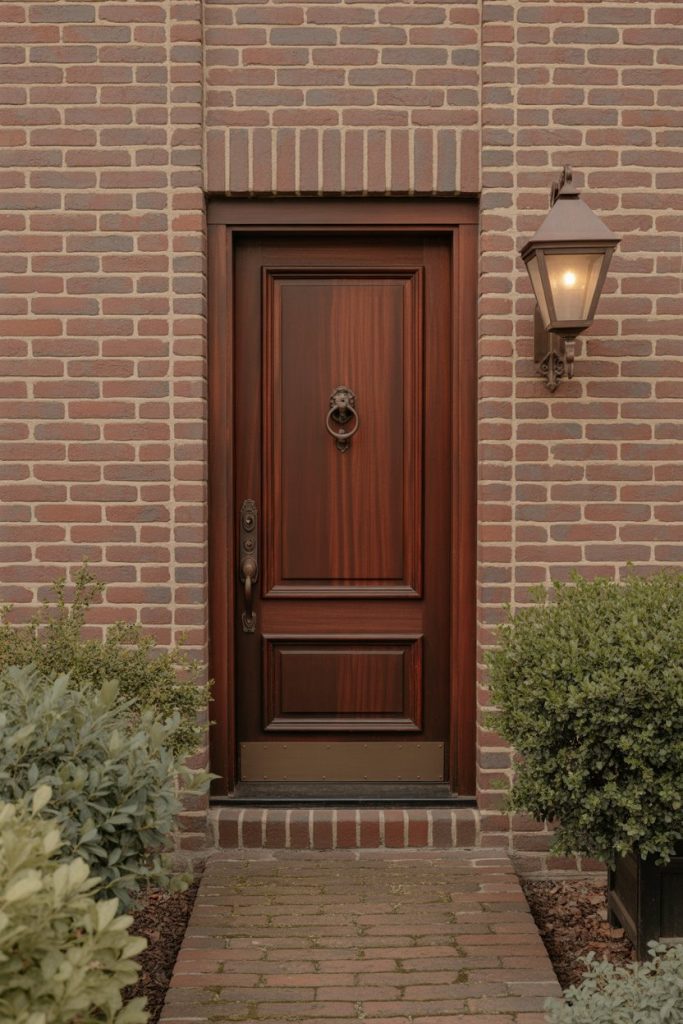
A deep brown door on a brown brick or classic brick house creates harmony instead of contrast. It’s popular with homeowners restoring historic properties because it feels authentic, like something that has always been there. Add oil-rubbed bronze hardware, and it becomes the front-porch version of a well-worn leather jacket—simple, handsome, and reliable. If bright colors feel forced on your architecture, earth tones are the smarter path.
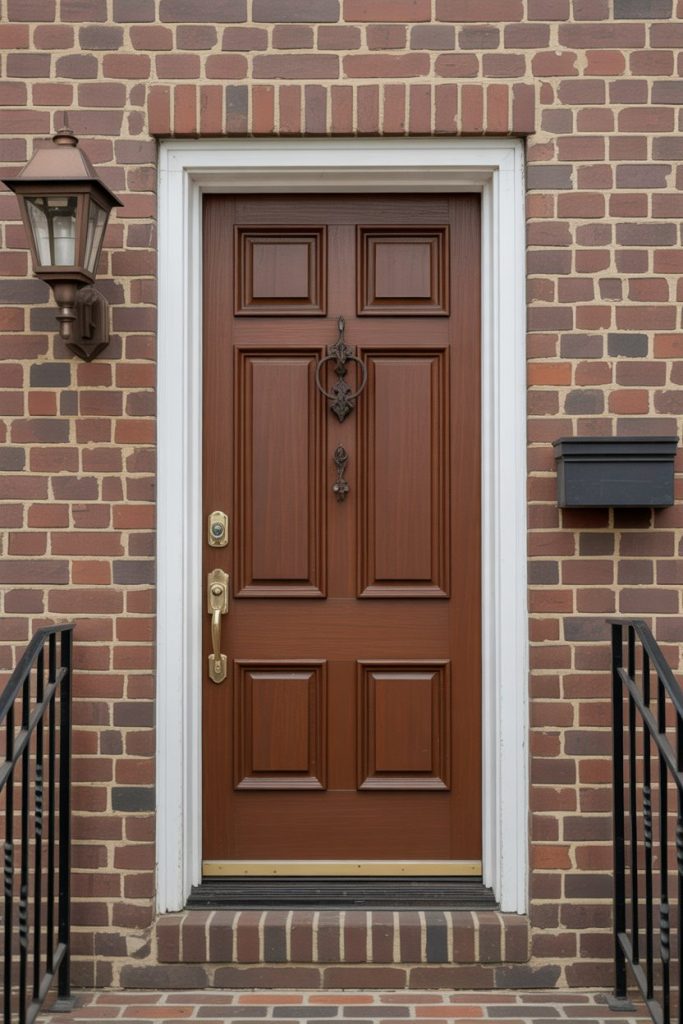
9. Soft Beige Harmony
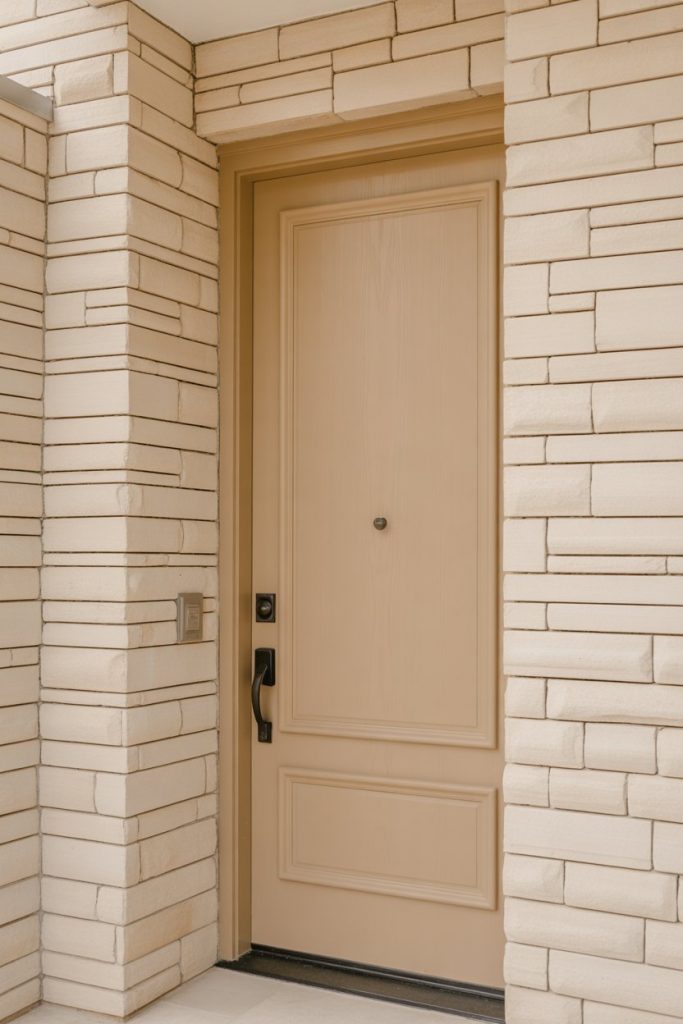
A beige door on a beige house may sound risky, but tonal layering is trending hard in 2026. The look is borrowed from European villas and updated by designers like Amber Lewis, who love subtle luxury. The effect feels calm and expensive, especially on stone or limewashed facades. Warm brass and pewter hardware provide the necessary detail so the door doesn’t fade into the background. Beige, once mocked as boring, is now “the whisper that wins.”

10. Sherwin Williams Evergreen Fog

One of the standout designer picks is Sherwin Williams Evergreen Fog, a moody mix of green and gray. It works for a rustic farmhouse, a modern stucco build, or a brown house with natural trim. The shade feels like forest air after rain—calm but stylish. Homeowners who want something trend-forward without going neon love it, and it pairs beautifully with light wood, iron rails, or terra-cotta pots.
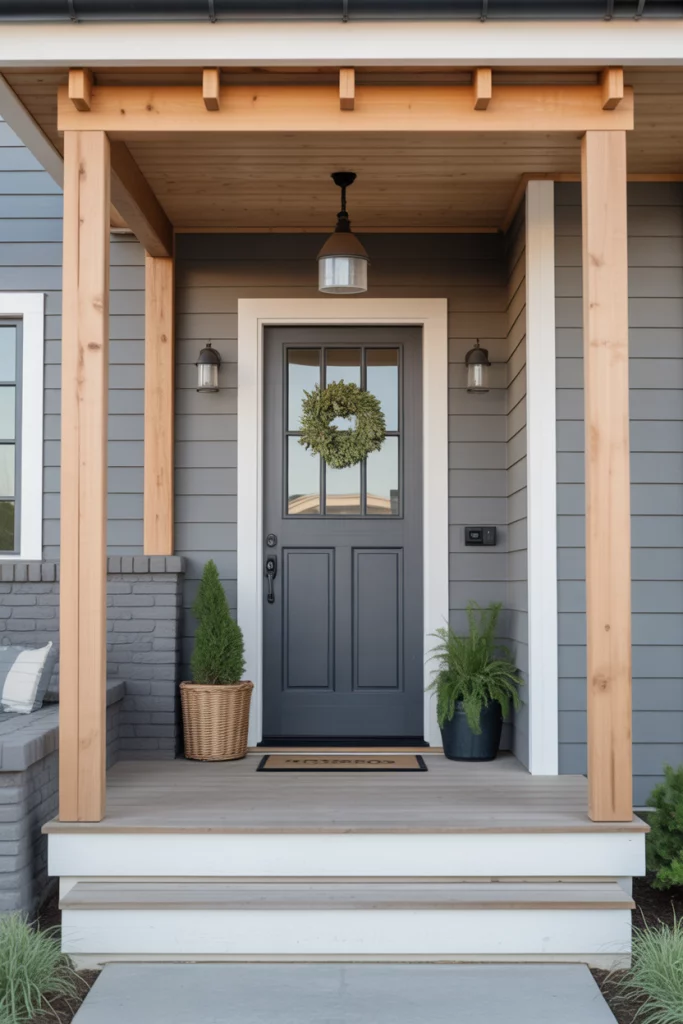
11. Terracotta Warm Welcome
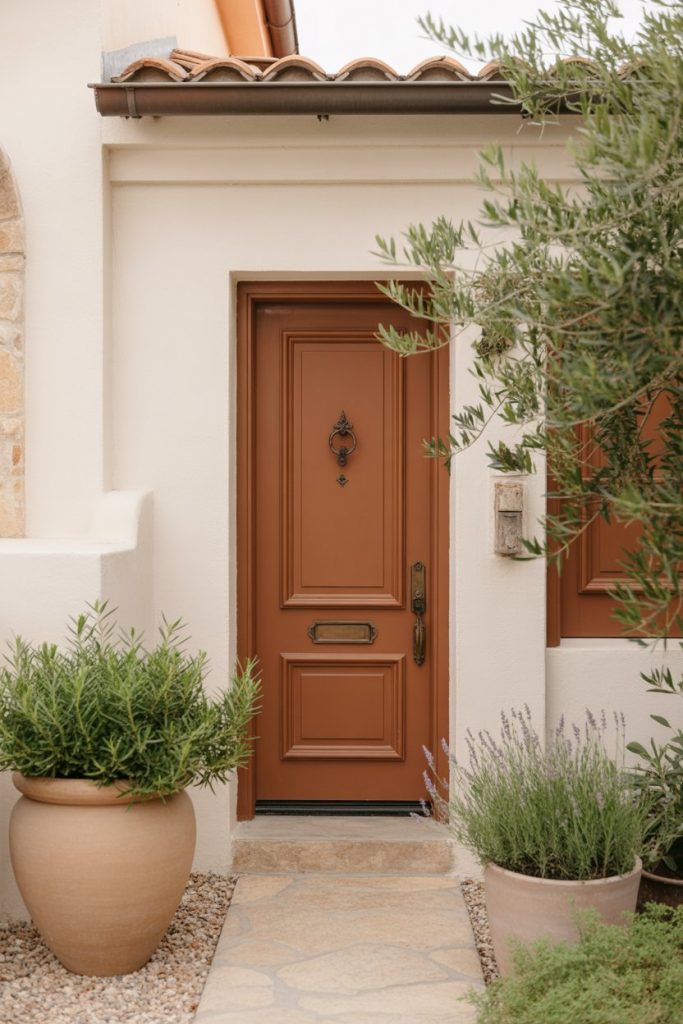
As you match terracotta doors with a white house or beige house, you begin to appreciate the Mediterranean warmth it brings. Paired with clay pots and warm metal fixtures, the ambience stands out. The color is as if handmade and sunbaked, like something out of an old Italian village. For those looking for earthy character but wishing to avoid darker tones, this is a great option. It adds character to modern and minimalist tones in the structure, making it approachable as well as lived in, while still exhibiting an expensive, curated feel.
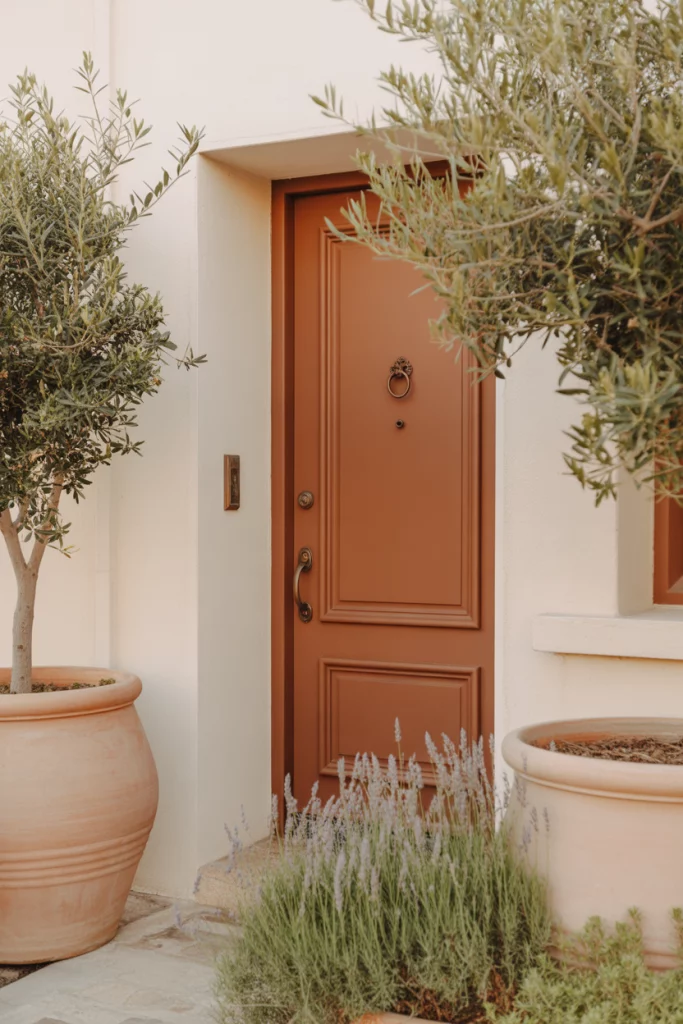
12. Deep Plum Drama
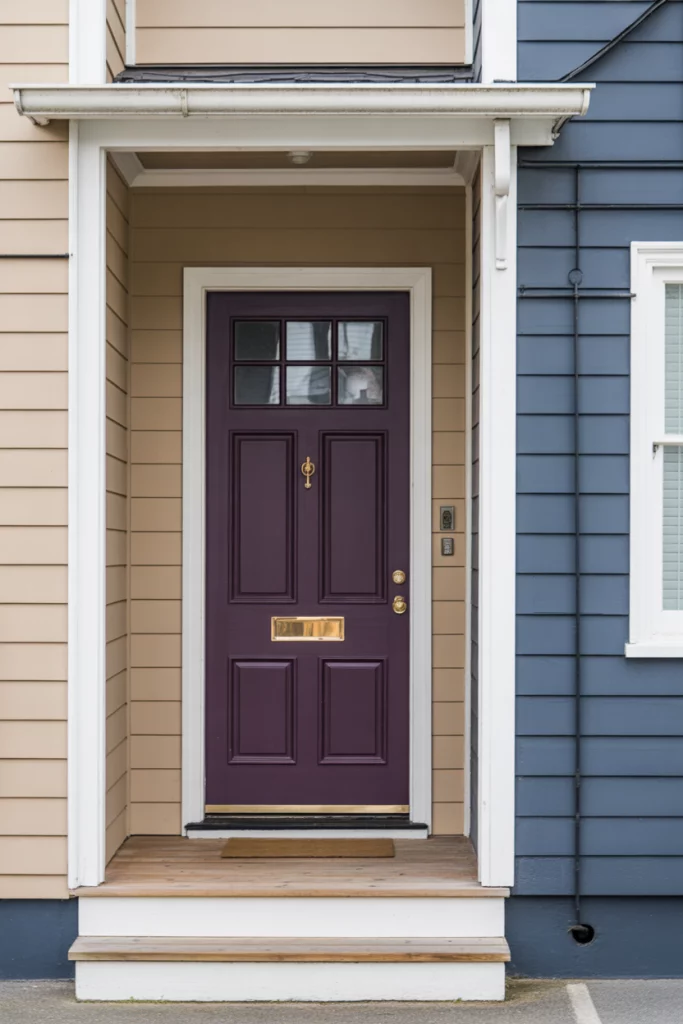
A deep plum or eggplant hue works perfectly, providing a bit of depth or balance to your house without using the heaviness of black. It works especially well on gray siding or a tan house that needs depth. It is best suited to transitional homes for designers, those that mix classic trim with modern lines. The shade feels artistic, like a gallery entrance, and looks stunning with brushed brass knockers. At best, it is the door color where people would most readily ask, “What’s inside?” in a pleasant manner.
13. Soft Coral Playfulness
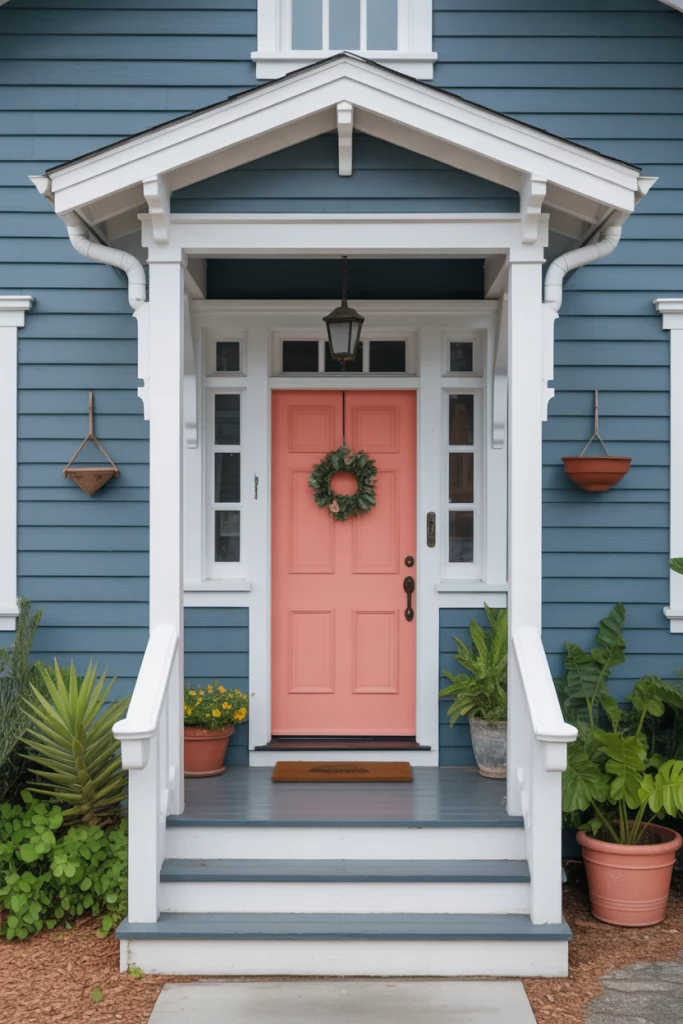
Coral is a happy medium between pink and orange, perfect for a coastal blue house or a relaxed farmhouse porch. It adds summer energy all year long and pairs beautifully with white trim and wicker textures. Young families and creative homeowners love this tone because it feels friendly but not childish. If you want a door that smiles before you do, coral is the way to go.
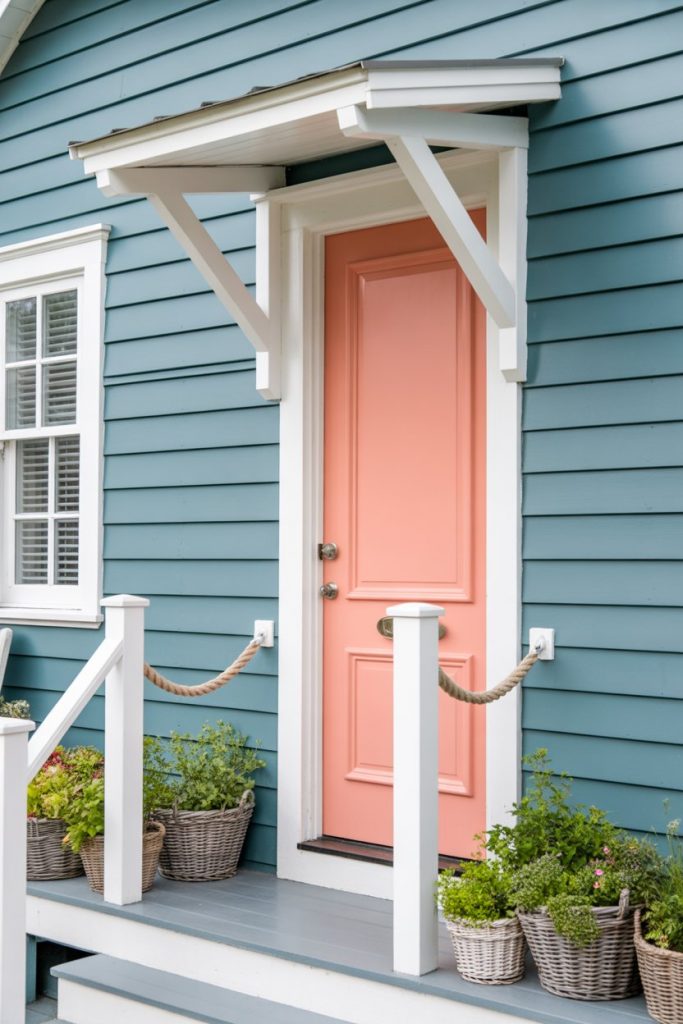
14. Olive Green Heritage
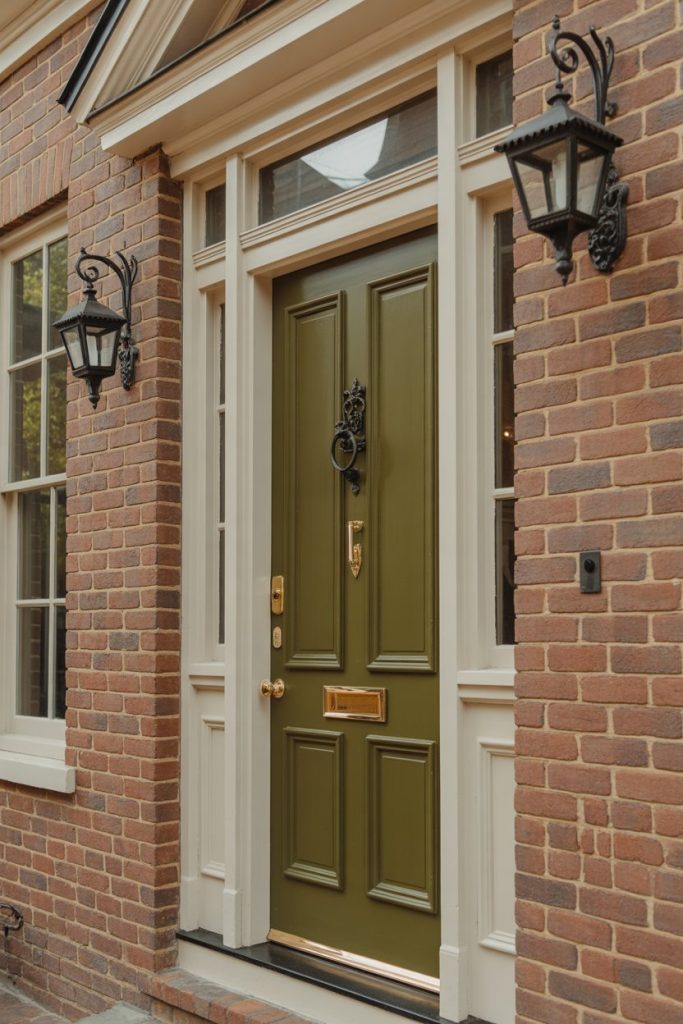
A muted olive looks refined on a brick house, brown house, or historic colonial. It carries an old-world charm that blends with aged mortar, copper lights, and iron railings. Unlike bright greens, olive behaves like a neutral—calm, rooted, traditional. Think English countryside but adapted to American suburbs. It’s the type of door color that makes a home feel established, even if it was built last year.

15. Clean White Reset
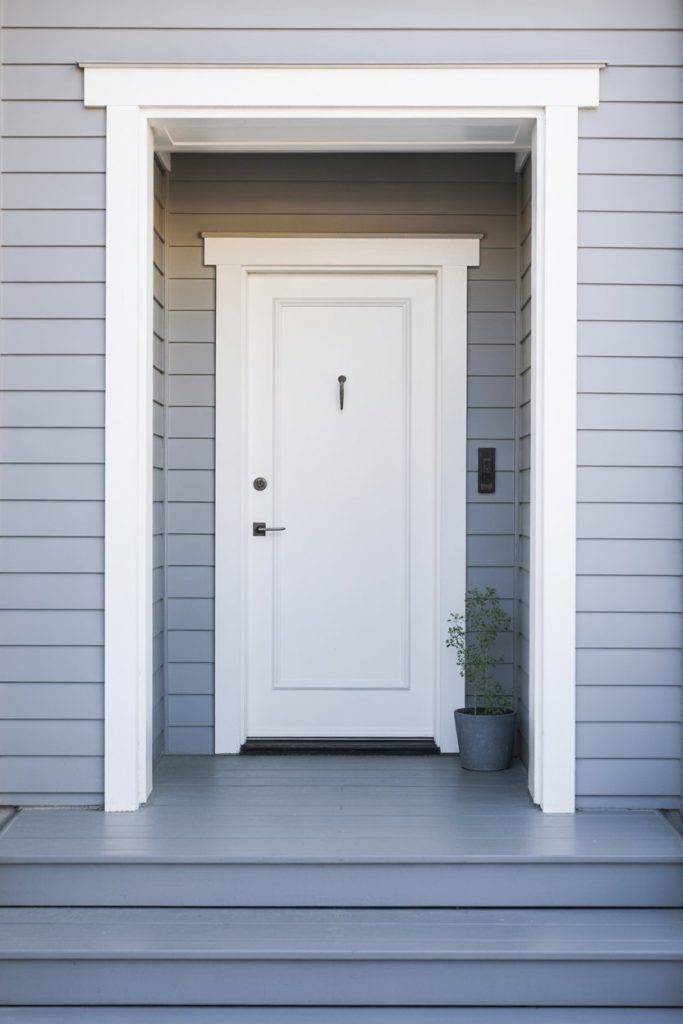
A crisp white door sounds simple, but on a gray house or blue siding home, it creates a fresh, airy contrast that feels modern and spotless. White doors reflect sunlight, making porches look bigger, and they pair well with black or gold hardware. Homeowners who love Scandinavian or coastal minimalism often choose this color because it feels like a reset button for the entire façade.
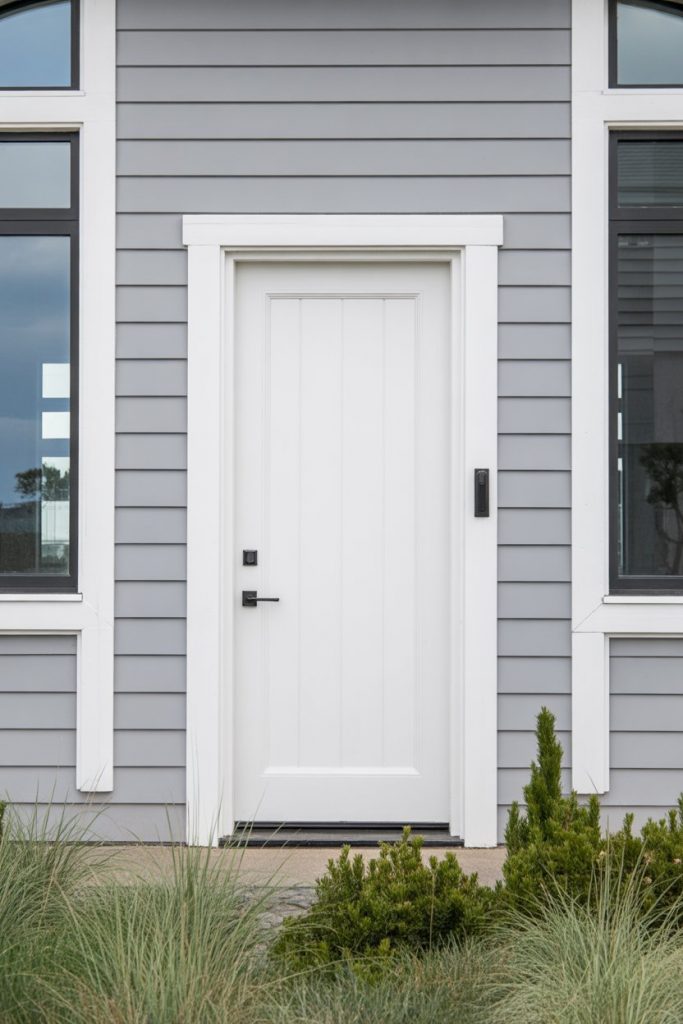
16. Burnt Orange Retro Revival
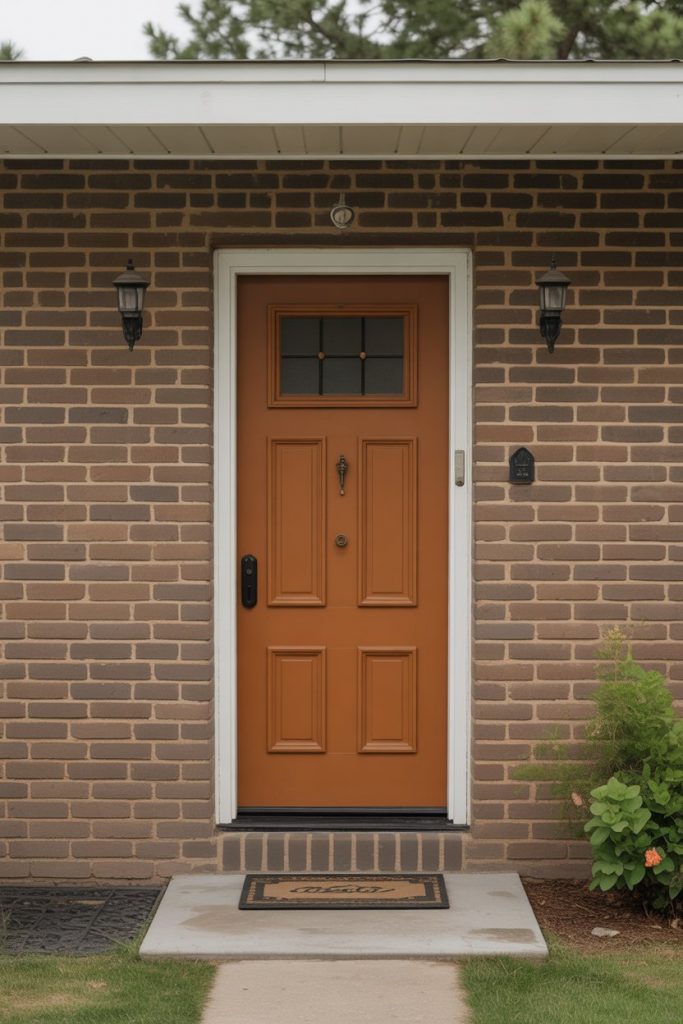
Burnt orange channels 1970s style in the best way—warm, nostalgic, and unmistakably confident. It works well on a mid-century ranch or brown brick home with reclaimed wood accents. Paired with matte black fixtures, it feels updated rather than costume-like. If you’re into vintage vinyl, classic cars, or Eames furniture, this shade will feel right at home.
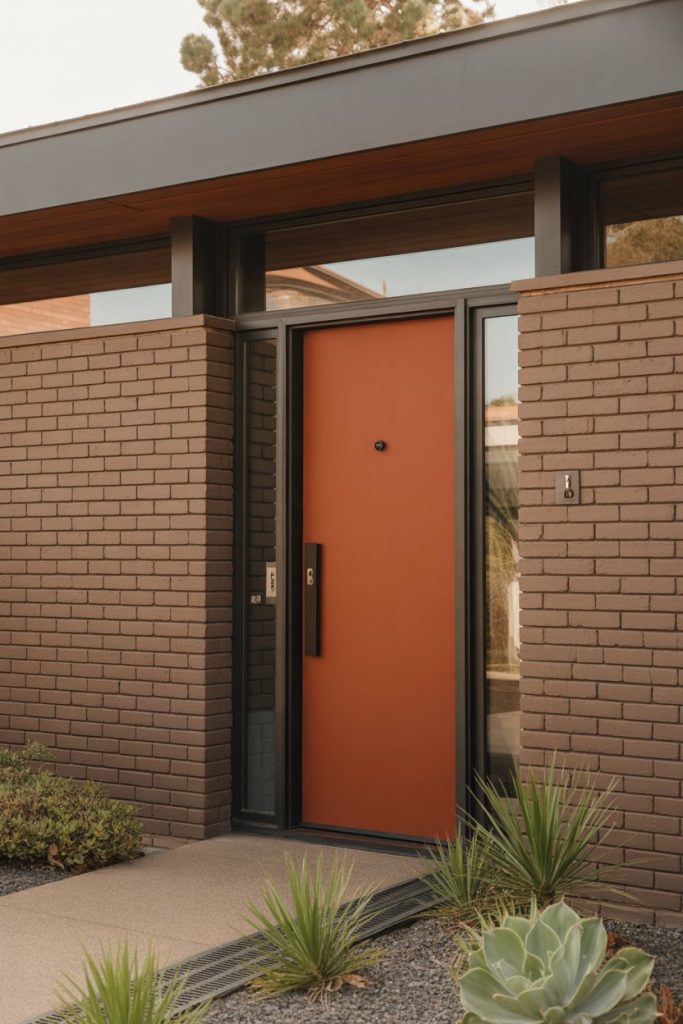
17. Storm Teal Depth

Storm teal is a mix of blue and green, deeper than aqua but softer than navy. It looks stunning on a white house with natural wood beams or a coastal build near water. Designers love teal because it shifts in different light—sometimes cool, sometimes warm. It’s an excellent pick for homeowners who want personality without neon intensity.
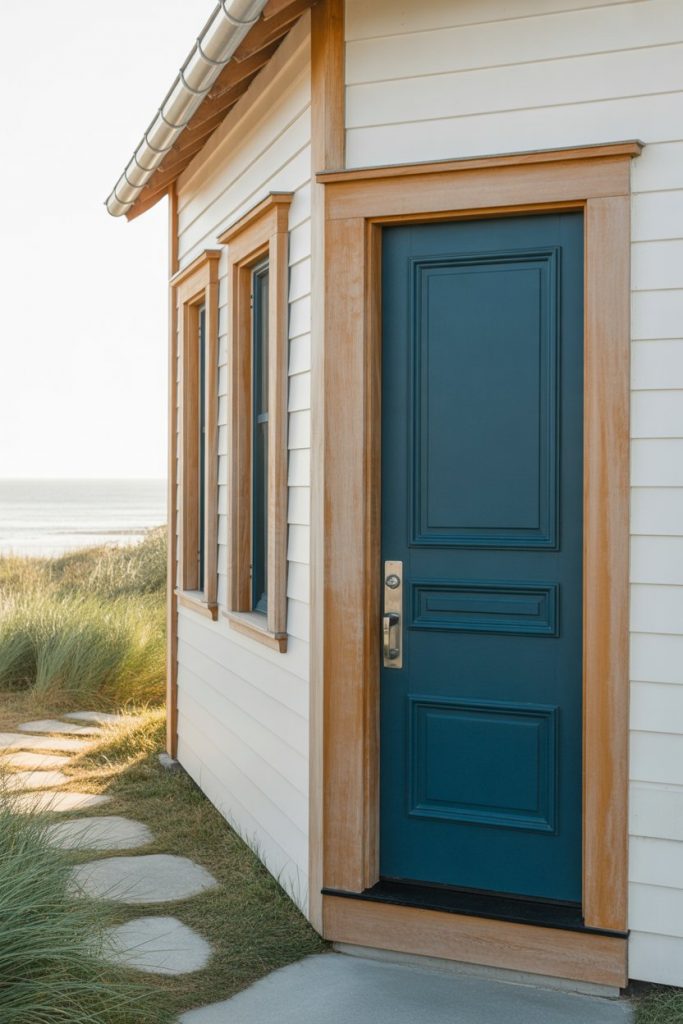
18. Soft Blush Neutral
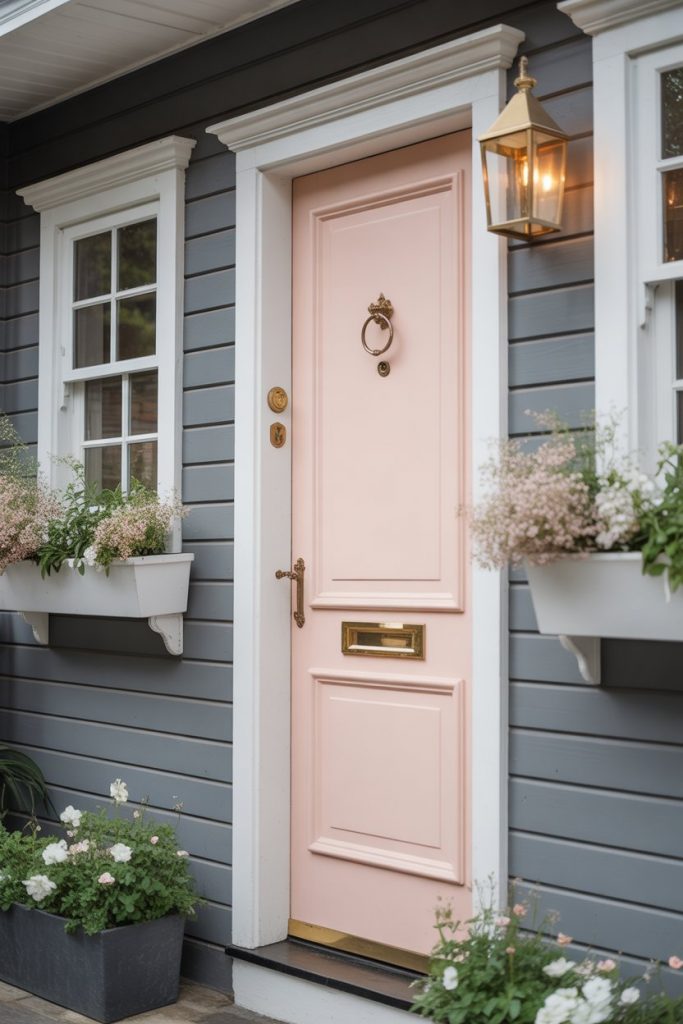
Blush is no longer just for interiors—it’s showing up on front doors as a warm neutral that flatters gray siding, brick house textures, and creamy stucco. It reads modern, gentle, and slightly romantic. Pair it with aged brass hardware, and it feels Parisian; pair it with matte black, and it becomes modern chic.
It’s subtle, but no one forgets it.
19. Mossy Woodland Green
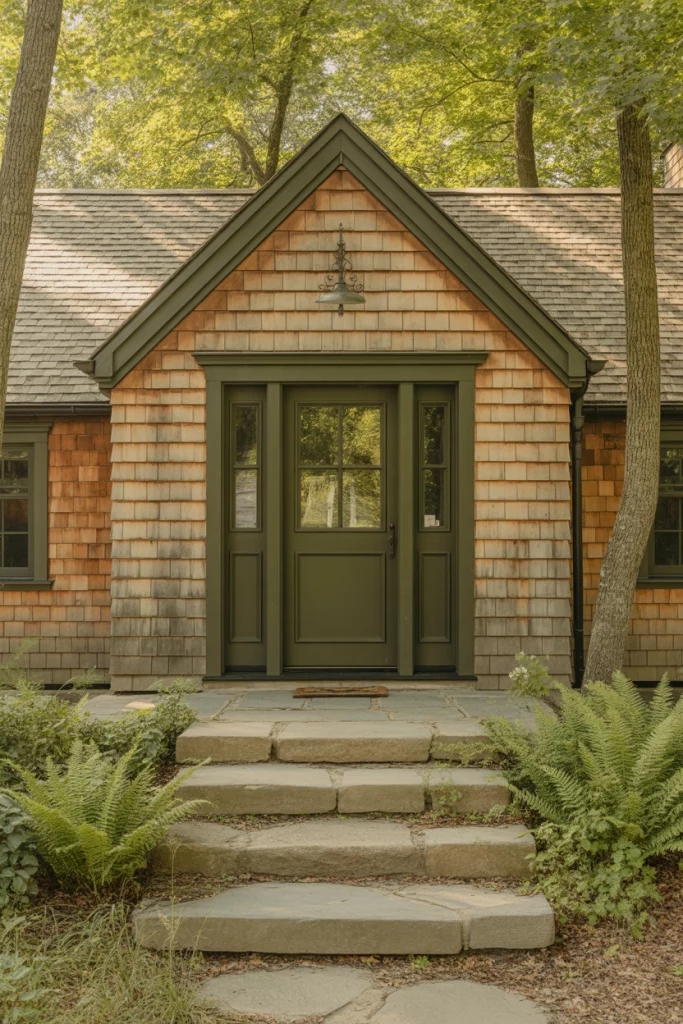
Heavier than sage green and earthy, moss green beautifully pairs with stone paths, cedar shingles, and wooded lots. It gives farmhouse- or cabin-style homes an aesthetic look, making it seem like they belong to nature rather than sitting on top of it. This shade makes the whole house feel grounded, which is why it is loved by homeowners who enjoy hiking, gardening, and peaceful porches.
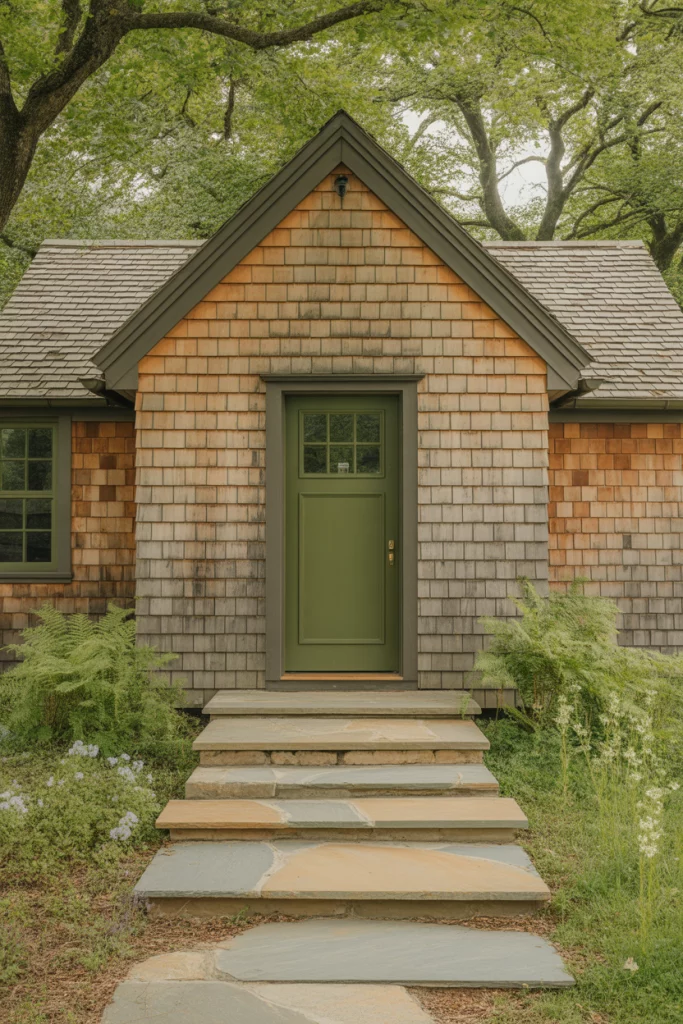
20. Polished Copper Statement
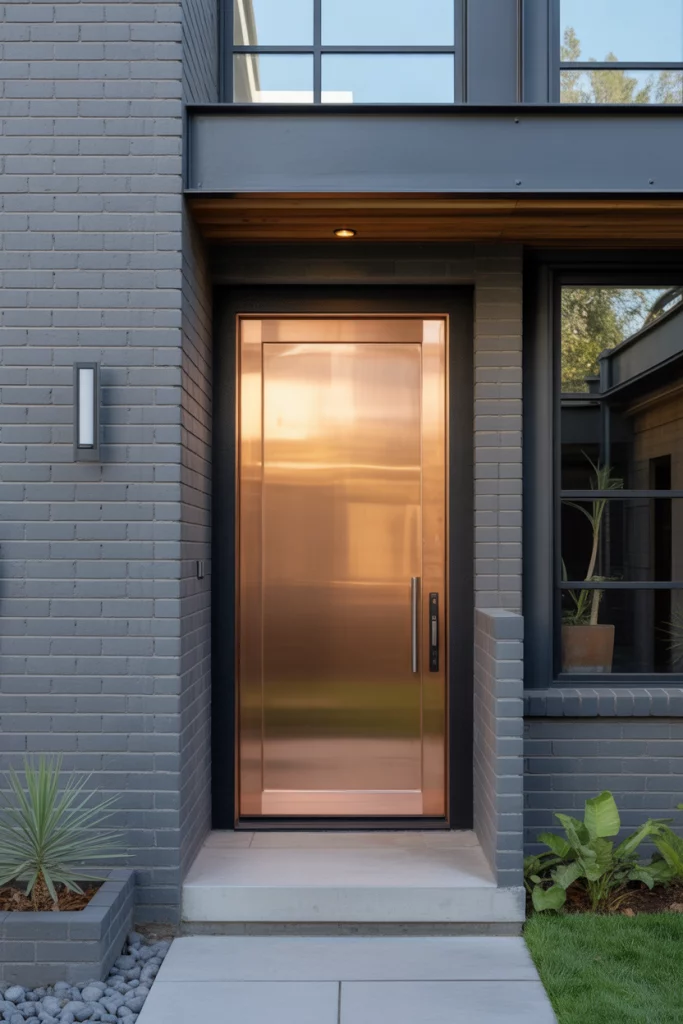
Doubling as an industrial-style accent, a real or faux copper door gives instant luxury. It beautifully contrasts a grey house or modern concrete build and works as jewelry against a neutral surface. Patina copper doors age beautifully, transitioning to a soft green-bronze and adding evolving character to an abode. It’s a bold feature that truly stands out.
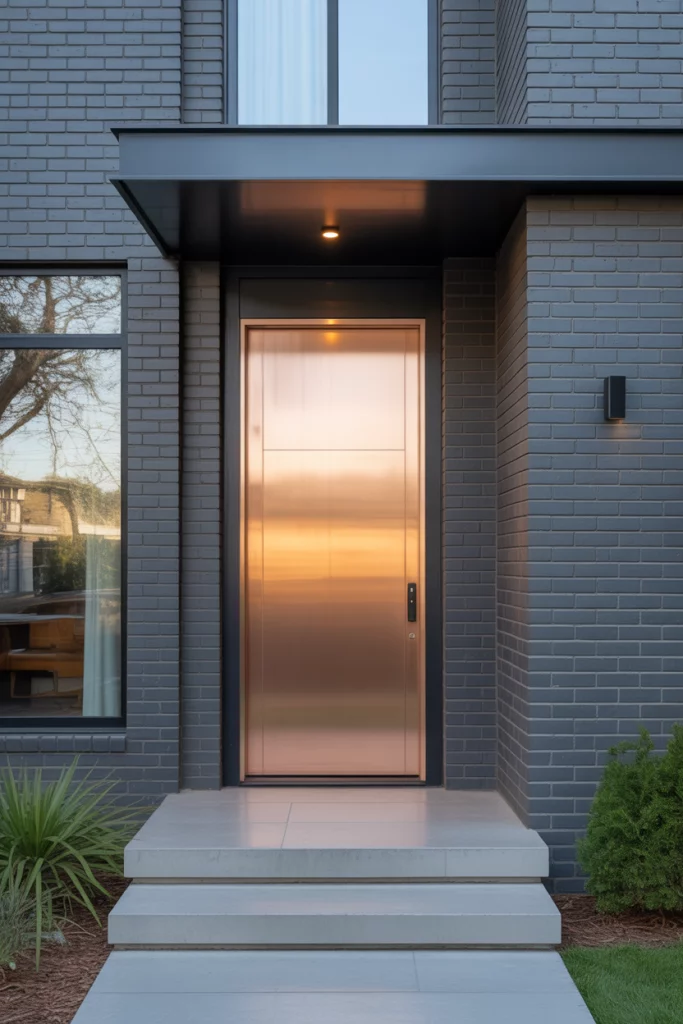
21. Denim Blue Americana
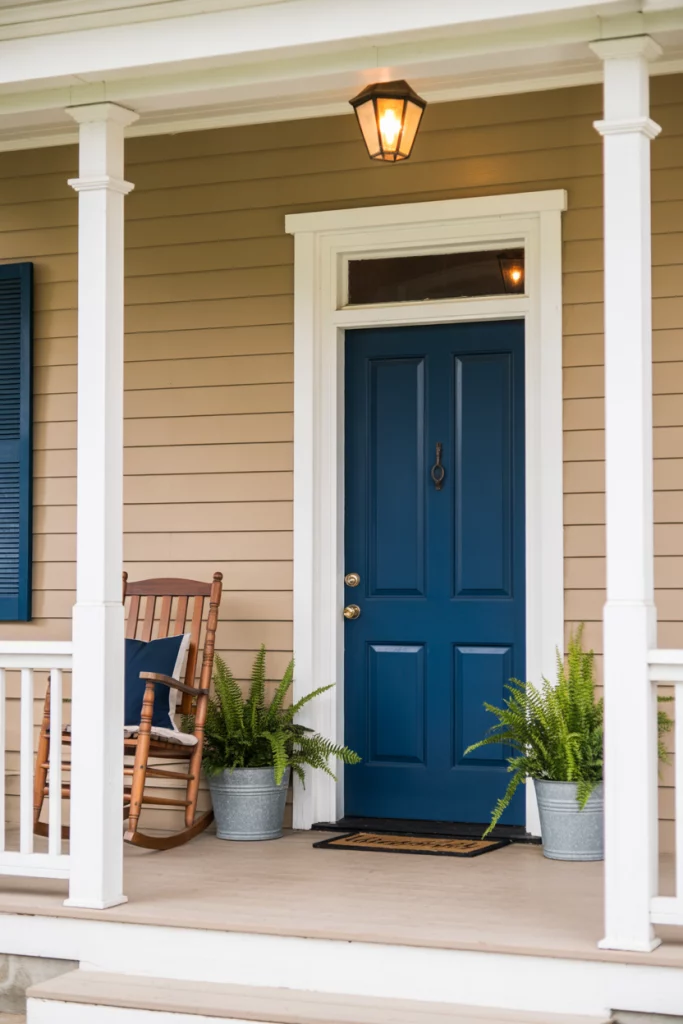
Softer than navy, denim blue gives a tan house or white house a relaxed, friendly, all-American look—like your favorite broken-in jeans. It works with wicker rockers, striped rugs, or farmhouse lanterns. This shade bridges traditional and casual, which is why it shows up on porches from Maine to Montana.
Conclusion
A front door is a small surface with big personality power. Which shade fits your home best—bold, calm, coastal, or classic? Share your thoughts in the comments, debate the best pick, or tell us which color made your neighbors jealous. Someone else might steal your idea—consider it flattery.
